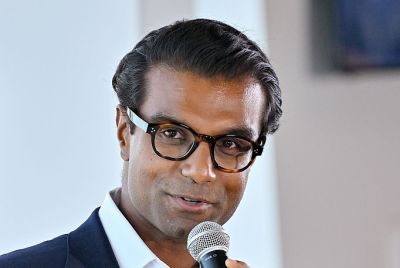P&G ponders brand buys to keep China lead
Procter & Gamble Co, the world's top maker of household products, will consider brand acquisitions in China to shore up and expand its leading position among multinationals muscling into the booming but fractured domestic consumer goods market.
P&G -- which sells household brands such as Duracell, Tide, Pampers, Gillette, and Folgers -- generates just under 5 percent of more than $75 billion in revenue from China and expects to stay at at least that level in the near future, greater China president Daniela Riccardi told Reuters on Wednesday.
To build on its lead, the firm -- which competes with Colgate-Palmolive Co, Unilever Group and Johnson & Johnson -- might resort to buying local or even foreign brands to shore up its portfolio.
What's different about China is the speed, the pace of change, Riccardi said. I've worked in many countries, and I've never experienced such speed in change.
We're open to acquisitions if it's the right opportunity, Riccardi said. But we're interested in good brands, not just turnover.
She would not give forecasts or elaborate on potential acquisition targets. Rival Unilever said this year it was aiming for revenue growth of about 20 percent yearly until at least 2010 and threatened to grab market share.
P&G broke into the Greater China region in 1985 when it entered Taiwan. The firm established its first mainland joint venture in Guangzhou three years later.
Annual economic growth of more than 10 percent in China and double-digit expansion in retail sales has created a rapidly expanding middle-class and driven people increasingly from local everyday brands towards foreign-made ones -- a boon for P&G and its rivals.
The firm now employs about 6,500 people in China and has invested over US$1 billion in the country.
MADE IN CHINA
In 2007, P&G's global sales rose around 12 percent to $76.5 billion -- bigger than Vietnam's GDP-- in the fiscal year ended in June aided by the October 2005 acquisition of Gillette and revamped products such as Pantene shampoo and Swiffer cleaning kits. Riccardi shrugged off Made in China product scandals -- from tainted toothpaste to toxic toys -- that have cast doubt over the quality of Chinese products. She said P&G did not export much from China to the rest of the world.
P&G owns and operates 10 plants in China in cities such as Beijing, Chengdu and Shanghai, and makes nearly all of its products for the region there.
In China, P&G is a market leader in almost all its categories with 50 percent of the shampoo market by value and 40 percent of the personal cleaning market, she added.
We only expect to strengthen those and our other leading positions going forward, Riccardi said.
Last September, P&G suffered a setback when its Japanese-made SK-II makeup product line was temporarily pulled from shelves after studies showed the products contained traces of neodymium and chromium, which could cause skin conditions dermatitis and eczema. And accusations by China Labor Watch persist that long-term workers at some of P&G's factories are permanently labeled temporary and forced to do overtime and eat lower quality food.
Riccardi said P&G outsources some production but kept international standards high.
For every one job at P&G in China, around 10 jobs are created --- including outsourced jobs, as well as jobs at our suppliers, business partners and distributors, Riccardi said.
We are sure to work with the best local and international outsourcing firms to ensure that standards are maintained.
© Copyright Thomson Reuters {{Year}}. All rights reserved.





















